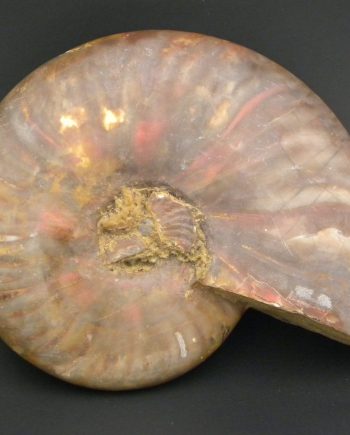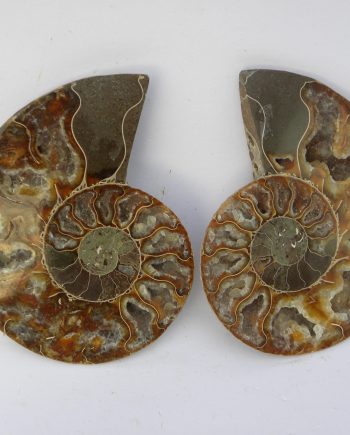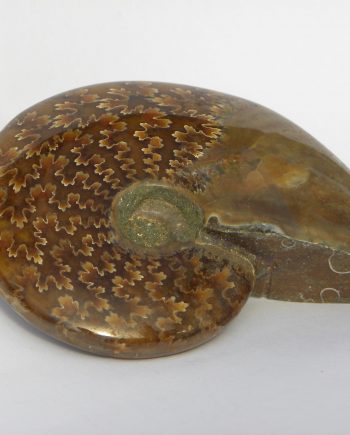Fossilised Ammonites
Ammonites
Fossilised Ammonites are one of the most well known and popular out of all fossils. These were once one of the most widespread and diverse creatures, with over 10,000 species identified. The fossilised shells can range of size from under one centimetre to two and a half metres. They swam in the seas over 200 million years ago are a member of the cephalopod family. The general consensus is that the ammonites multi-chambered shells were designed to protect the soft, vulnerable body tissue. They had long tentacles that they used for catching the prey, and had beak-like jaws.
They died out at the same time as the dinosaurs 65 million years ago. Although extinct close relatives live on as the cephalopod family. Todays cephalopods includes squid, together with octopus and also cuttlefish. The closest equivalent that still swim our seas is the nautilus. These not only resemble ammonites but are closely related to the ancient nautilus of the Jurassic period.

-
Somerset Ammonite Hildoceras
-
Ammonite Douvilleiceras 12cm
-
Somerset Ammonite Hildoceras in matrix
-
Collection of Ammonites
-
Ammonite paracoroniceras charlesi 41.5cm
-
Large Pair of Ammonites (cleoniceras)
-
Ammonite Titanites
-
Asteroceras & Promicroceras, Fossilised Ammonites from Dorset
-
Ammonite Pair Cleoniceras 10.9cm
-
Opalescent Fire Ammonite
-
Polished Half Section Ammonite Cleoniceras
-
Ammonite Cleoniceras
-
Ammonite Cleoniceras In Matrix
-
Agadir Ammonite
-
11.5cm Perisphinctes Ammonite
-
Polished Ammonite Cleoniceras
-
Cut Pair Ammonite cleoniceras
-
9.5cm Perisphinctes Ammonite
-
Horned Ammonite Mamites
-
Ammonite cleoniceras 10cm
-
Large Polished Ammonite cleoniceras
-
Group of Three Perisphinctes Ammonites
-
Ammonite Lytoceras 13.5cm across
-
Fossilised Agadir Ammonite 14.5cm

























